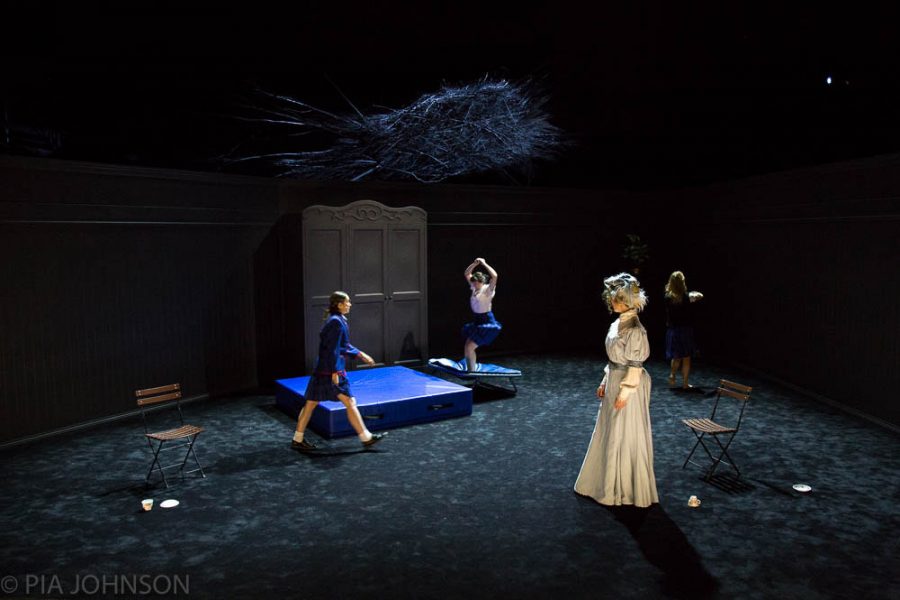Presented with deliberate ambiguity as to its basis in real events, Joan Lindsay’s 1967 novel Picnic at Hanging Rock tells the story of three young schoolgirls who vanish, along with their teacher, on a Valentine’s Day outing to the Australian countryside in 1900. This stark new production from writer Tom Wright and director Matthew Lutton aims to bring the classic tale into a modern theatrical setting, with heavy emphasis on tension, eeriness and confusion.
The play opens with a tableaux-like recital of the events in question, as five schoolgirls creep ominously towards the audience whilst narrating the story of the girls’ disappearance. This fleeting treatment of the chief occurrence at the heart of the book and play is all the insight we’re allowed into the vanished girls’ minds, with the exception of one of their number Irma, who is discovered by a travelling Englishman and returns to her all-girls school in a state of numb bafflement.
The remainder of the tale focuses on how the disappearance affects countless others in the years which follow, with particular attention given to the shy, withdrawn Sara, who was held behind on the fateful day by the tyrannical headmistress Miss Appleyard. Vague references to the repressive effect that English colonialism (embodied by the cruel principal) has had on Australian life are raised but never fully explored, with the main intention of the work seemingly to disorientate and unsettle its audience.
The pitch-black interludes which break up scenes are effective tools in allowing the girls to switch positions and wheel props into place on stage, as well as creating a sense of implacable dread. While the technique is a bold and bracing one, its overuse lessens its impact with each repetition. Similarly, the constant switching of roles by the girls works to create an atmosphere of confusion and discombobulation, which might be in keeping with the subject matter of the story but ultimately just makes for a disjointed, difficult-to-digest production.
As for the girls themselves, they all put in strong performances and acquit themselves admirably, with special mention going to Elizabeth Nabben in the role of the stringent Miss Appleyard and Arielle Gray as the emotionally constrained and often physically contorted Sara. Unfortunately, the girls’ obvious talent is not enough to overcome the problems in the script and staging, and though the play is a useful exercise in disconcerting theatre, it never quite reaches the heights of terror and panic to which it strives.
